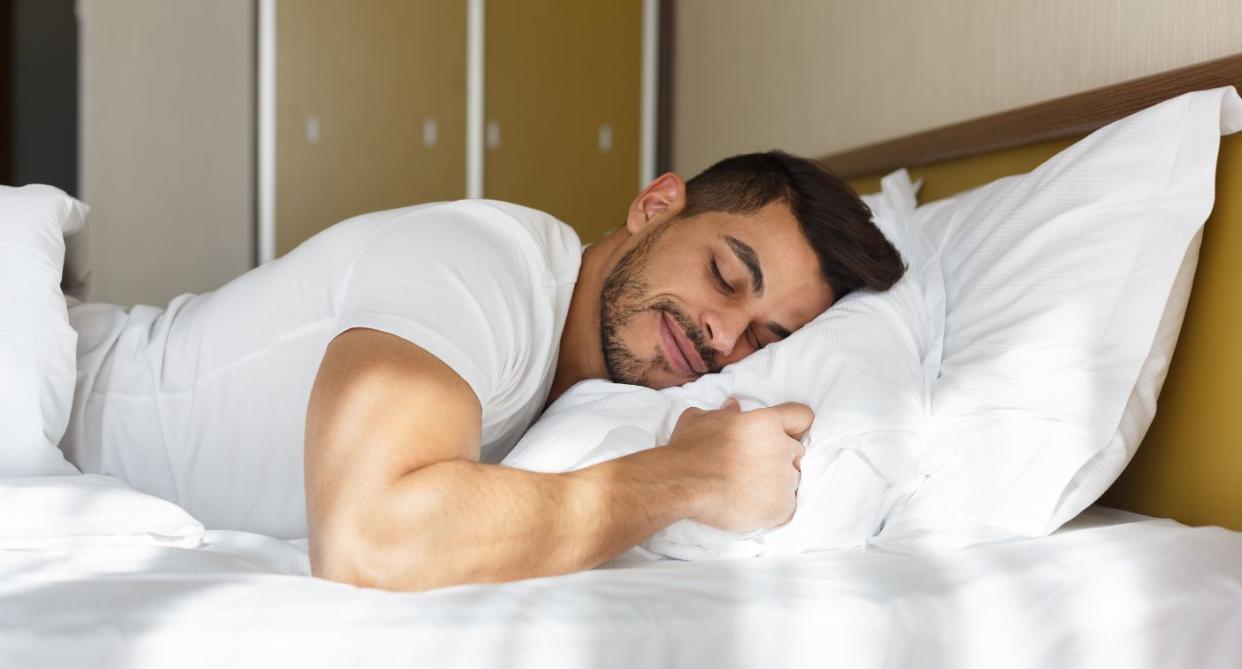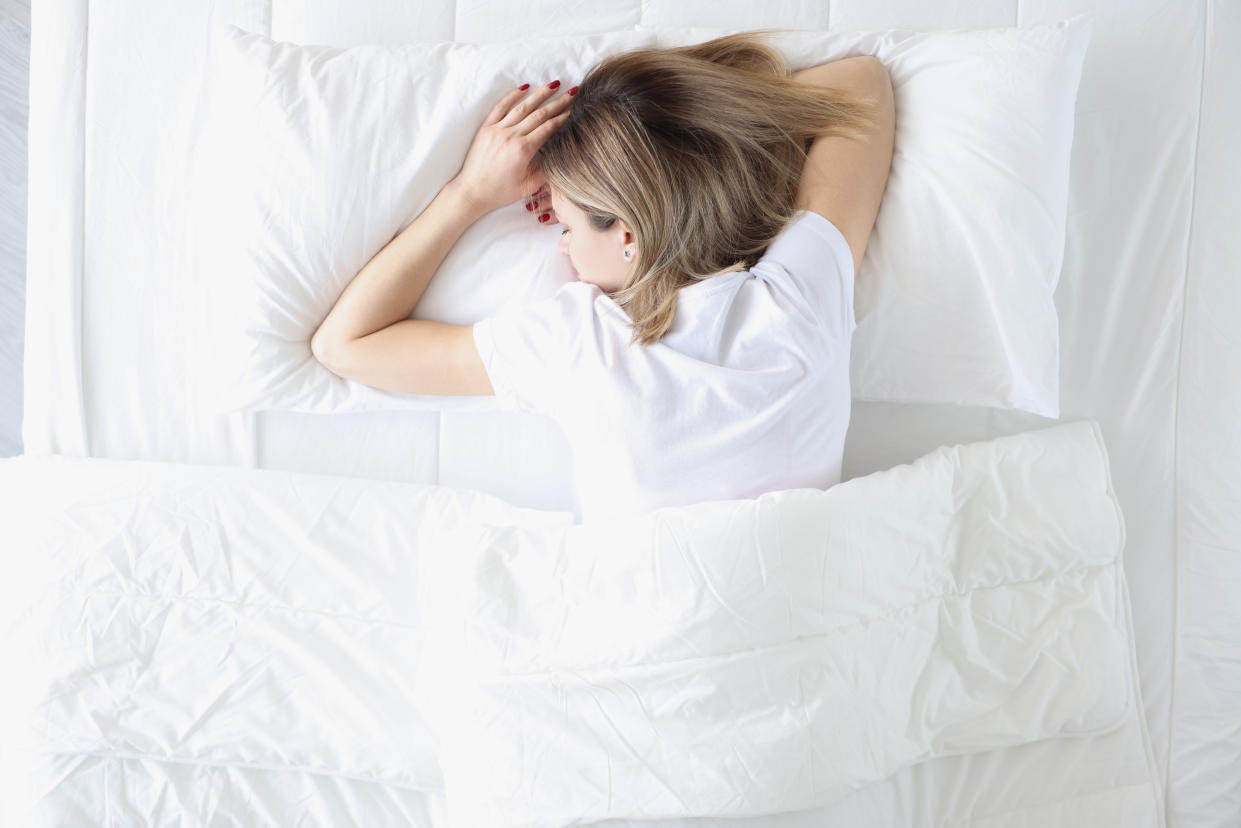Why you shouldn't sleep on your front

It's no secret that sleep is the key to much of our happiness and wellbeing.
But you may not realise that even if you sleep for eight hours each night, if it's not in a great position, it can lead to a variety of different health issues.
With this in mind, a chiropractor has warned against sleeping on your front, no matter how comfy you might find it, to avoid being at risk of these complications...
Why you shouldn't sleep on your front
Neck and back issues

Sleeping on your front strains your neck as you have to turn your head to one side to breathe. This can cause muscle tightness, inflammation and pain.
"Front sleeping flattens the natural curve of your spine, which can cause lower back pain. If you already have neck and back problems, sleeping in this position is almost guaranteed to make them worse," Dr. Tony Nalda, who leads the Scoliosis Reduction Center, explains.
Breathing and spinal problems

Front sleeping can make it harder to breathe deeply.
"This is because the position compresses your diaphragm. If this causes lower oxygen intake overnight, it’ll disrupt the quality of your sleep," says Dr Nalda.
"Sleeping on your stomach also puts extra pressure on your spine, potentially straining your vertebrae and the surrounding muscles."
Impact on cardio

"Front sleeping makes your body work more, including your heart, as by pressing on your chest, you make it harder for blood to circulate," says Dr Nalda. "Over time, this increases the risk of cardio issues, especially if you already have problems. If you struggle to breathe deeply, it can lead to higher blood pressure."
Neurological symptoms

Stomach sleeping forces your neck into a twisted position, which Dr Nalda points out can lead to migraines, tension headaches and other neurological issues. The unnatural angle can also pinch nerves, leading to discomfort, numbness, or tingling in the arms and hands.
Best positions to sleep in
So, what are the optimal sleeping positions for our health? "Back sleeping is best as it maintains the natural curve of the spine and minimises pressure on the joints. Alternatively, side sleeping improves heart health and reduces snoring," says Dr Nalda.
"A body pillow can provide extra support for the back or side position, and discourage rolling onto your stomach. Choose a mattress and pillow that provide the right level of support for your chosen position."
Meanwhile, commenting on the best positions to support your body and help ease or prevent back pain, physiotherapist Karen Beattie, musculoskeletal corporate clinical lead at Vita Health Group, says, "There isn’t one 'right' sleeping position that will guarantee everyone a restful and pain-free sleep.
"Everyone experiences pain differently and what works for one person may not work for another. However, there are some simple tricks you can try that'll help to take the pain and strain off your back and give you a restorative night’s sleep."
If you're a side or back sleeper, she agrees sleeping with an extra pillow can help. "On your side, draw your legs up slightly towards your chest and put a pillow between your legs. This can help align your spine, pelvis and hips. Having a pillow between your legs can also help to prevent your upper leg pulling forward and twisting your torso. Avoid tucking your chin to maintain the natural curve of your neck," she explains.
"On your back, place it under your knees to help relax your back muscles and maintain the curve of your lower back. To hold your body in place, you could also try putting a small, rolled-up towel under the small of your back."
While Beattie agrees laying face down on your bed can add extra pressure on your neck and lower back, she adds, "If you do need to sleep on your front, placing a pillow under your hips and lower stomach can take the pressure off your lower back. You may also want to try having a pillow under your head if your neck feels strained."
She also recommends a pillow that supports your neck where needed, but as everyone is different, it's about finding the right one for you (though says you should avoid one that's too thick or thin!).
Consult your doctor about the best sleeping position for you or if you suspect you have any of the above mentioned issues.
Read more: The key culprits of a sleepless night, according to new study (Yahoo Life UK, 5-min read)
Read more: Top five exercises to release back tension, according to a physiotherapist (Yahoo Life UK, 4-min read)
Read more: What are sleep chronotypes? Understanding them could improve your sleeping habits (Yahoo Life UK, 7-min read)
Watch: Experts Say They've Found the Ideal Amount of Sleep for the Middle-Aged and Elderly


